Definition
Whiplash injury is an injury to the soft tissues of the neck caused by forced flexion followed by hyperextension of the neck. Muscles, tendons, and ligaments that surround the bones of the neck are stretched beyond their limits in whiplash injuries. This type of sudden stretching often results in pain. In rare instances, whiplash injuries can lead to cervical disc herniation’s if the person had previously degenerative changes in their neck. These injuries are often caused by motor vehicle accidents, sports injuries, or falling from a height. Symptoms often subside after a few weeks of recovery and non-surgical management.
Types of Whiplash Injury
There are four major types of whiplash injury
Muscle Injury
The motion of your head snapping backwards stretches your muscles farther than they would ordinarily go. This extreme stretch can lead to tenderness or even swelling in the muscles of the neck and shoulders.
Nerve Injury
When your muscles stretch, your nerves stretch too. “Pinched” nerves and other nerve damage is more likely to occur if your head was turned during the impact. It can also occur if your headrest was improperly positioned, of poor quality, or absent.
Joint Injury
Joints in your cervical vertebrae allow you to move your neck. These joints allow the bones to move smoothly over one another. Injury to these joints can cause stiffness and pain. The pain may be in the area of the affected joint, but it can also transfer into other areas of the body such as the shoulders and arms.
Disc Injury
Discs act as “shock absorbers” in between your vertebrae. They also prevent the vertebrae from rubbing one another and causing wear. Discs are also where your sensitive nerves enter and exit the spinal cord. Whiplash injuries can damage these discs. They can bulge, herniate or even rupture. Without the protection of a healthy disc, painful nerve irritation can follow.
Risk factors
Risk factors for whiplash include:
- Age younger than 5 years
- Driving or riding in automobiles
- Participating in contact sports
Reducing your risk of whiplash
Ways to reduce your risk of experiencing whiplash include:
- Always wearing a seat belt when riding in a car
- Buckling infants and children into age-appropriate car seats
- Properly adjusting your vehicle’s headrest to reduce the backwards whipping motion that occurs when your vehicle is rear-ended
If you suspect a whiplash injury, you should seek prompt medical attention to rule out more serious injury like a broken neck (cervical fracture) or brain injury. Infants and toddlers should always be evaluated for any suspected case of whiplash.
Causes of Whiplash Injury
Whiplash typically occurs when your head is forcefully and quickly thrown backward and then forward. This motion can injure bones in the spine, disks between the bones, ligaments, muscles, nerves and other tissues of the neck.
A whiplash injury may result from:
- Auto accidents: Rear-end collisions are major causes of whiplash.
- Physical abuse or assault: Whiplash can occur if you are punched or shaken. It’s one of the injuries seen in shaken baby syndrome.
- Amusement park rides, such as a roller coaster, which can jerk your head quickly backward and forward
- Contact sports: Football tackles and other sports-related collisions can sometimes cause whiplash.
Symptoms of Whiplash Injury
Sometimes there are no symptoms of whiplash, but sometimes the symptoms can be severe.
Pain from a whiplash injury often begins 6 to 12 hours after the injury. Many people feel uncomfortable on the day of the injury or accident and find that pain, swelling and bruising increase over the following days.
Common symptoms of whiplash include:
- Neck pain and stiffness
- Swelling and tenderness in the neck
- Temporary loss of movement, or reduced movement, in the neck
- Headaches
- Muscle spasms
- Pain in the shoulders or arms
- Dizziness
- Weakness
- Pins and needles, numbness or pain in the arms and hands
- Difficulty concentrating
- Difficulties swallowing
- Blurred vision
- Vertigo (a feeling you are moving or spinning) and dizziness
- Tinnitus (ringing in the ears)
The symptoms often greatly improve or disappear within a few days to weeks. It may take longer for symptoms to completely disappear and some people experience some pain and neck stiffness for months after a whiplash injury.
Whiplash Injury Complications
Whiplash injuries can cause a number of other, complex related problems such as:
Chronic Whiplash: Most patients with whiplash make a full recovery in a matter of weeks or months with proper treatment. But certain individuals with more serious damage can develop chronic whiplash with symptoms that remain for years. Women are frequently more seriously injured by whiplash because of the difference in muscular bulk and bone structures.
Concussion: The impact that causes whiplash can sometimes cause a concussion as well. It is important to see a physician after your accident to assess the damage. If you are confused, nauseous, dizzy, or excessively sleepy after the accident seek medical attention immediately.
Joint Dysfunction: One of the spinal or limb joints may lose its normal resilience or shock absorption as a result of the whiplash. This could lead to pain and restricted movement.
Disc Herniation: A whiplash injury may damage the discs between the vertebrae, causing a herniated disc. This condition may cause sharp, shooting pain down an arm as well as numbness, tingling and weakness.
Faulty Movement Patterns: As a result of a barrage of intense pain signals from the whiplash injury, the nervous system may change the way it controls muscle function, affecting one’s ability to coordinate movements.
Diagnosis and test
Your doctor will ask questions about the event and your symptoms. You also may be asked questions that help your doctor understand how severe your symptoms are and how often they occur. Your doctor will also want to know how well you can perform normal everyday tasks.
Examination
During the exam your doctor will need to touch and move your head, neck and arms. You will be asked to move and perform simple tasks so that your doctor can check the:
- Range of motion in your neck and shoulders
- Degree of motion that causes pain or an increase in pain
- Tenderness in your neck, shoulders or back
- Reflexes, strength and sensation in your limbs
Imaging tests
A whiplash injury isn’t apparent on imaging tests. But your doctor will likely order one or more imaging tests to rule out other conditions that could be making your neck pain worse. Imaging tests include:
X-rays: Fractures, dislocations or arthritis can be identified by X-rays of the neck taken from many angles.
Computerized tomography (CT): This special type of X-ray can produce cross-sectional images of bone and show possible bone damage.
Magnetic resonance imaging (MRI): This imaging test uses radio waves and a magnetic field to produce detailed 3D images. In addition to bone injuries, MRI scans can detect some soft tissue injuries, such as damage to the spinal cord, disks or ligaments.
Treatment and medications
Treatment focuses on alleviating pain and stiffness in the neck, as well as healing the damage to muscles, ligaments, and tendons.
Self-Care for Whiplash
If whiplash symptoms are mild to moderate, some self-care options typically include:
Rest: While it is good to stay active if possible, it also makes sense to take things easier the first few days. If a certain motion or activity exacerbates the neck pain, then avoid or limit that movement until the neck has more time to heal.
Ice or heat: In the first couple days following a whiplash injury, applying ice can reduce pain and swelling in the neck. During this time window, the ice or cold packs can temporarily close small blood vessels and prevent a worsening of the swelling. Then ice or heat can be applied alternately a few days after the injury has occurred.
Over-the-counter (OTC) medications: Some common OTC pain relievers include acetaminophen (Tylenol) and nonsteroidal anti-inflammatory drugs (NSAIDs), such as Advil, Aleve, and Motrin. Acetaminophen can block pain receptors, and NSAIDs reduce inflammation. Despite being readily available at the store, it is important to carefully read the OTC label and follow its directions.
In the past, some doctors advised whiplash patients to wear a cervical collar to immobilize the neck in the beginning, but this advice oftentimes made the problem worse. Immobilization allowed the neck muscles to weaken and become more problematic for the cervical spine.
Medical Care for Whiplash
If whiplash pain or related symptoms are severe and/or do not seem to be going away, medical care should be sought. Some combination of the following treatments could be used:
Physical therapy: A treatment program run by a trained physical therapist or qualified health professional can help improve the neck’s strength and flexibility, which in some cases can relieve stress on the spine and reduce pain.
Prescription pain medications: If over-the-counter drugs have not successfully managed the pain, then prescription-strength medications, such as muscle relaxants and opioids, could be prescribed under the careful supervision of a physician.
Injections: In some cases, an injection is used to target a specific area. Some examples could be cervical epidural steroid injection (to reduce nerve and tissue inflammation from a disc herniation), cervical facet joint injection (to provide relief within the joint), and trigger point injection (to help an irritated muscle bundle).
Psychotherapy: If for any reason a person develops a psychological condition in the aftermath of a whiplash injury, such as depression or post-traumatic stress disorder, a mental health professional can provide counseling to help work through, understand, and manage the issues. Medications could also be prescribed.
Manual manipulation: A chiropractor or other certified medical professional typically uses his or her hands to make manual adjustments to the spine in an effort to increase range of motion and reduce pain.
Acupuncture: Some people report benefits from acupuncture, which involves placing thin needles in various strategic parts of the body depending on the condition being treated. When done by a licensed acupuncturist, the treatment is safe and has little to no pain.
Massage therapy: This treatment can be combined with others, such as physical therapy or manual manipulation. A massage can reduce pain by soothing muscle tension and spasms, as well as increasing blood flow.
Radiofrequency neurotomy: This procedure targets specific nerves with heat to create a lesion that prevents the facet joint from sending pain signals to the brain.
How to prevent whiplash injury
Prevention is the most effective way to avoid whiplash.
- Always using seat belts and drive motor vehicles with airbags. Proper adjustment of the car seat headrest can also help keep the neck from snapping backwards.
- Always use the proper safety equipment when participating in sports.
- Follow amusement park or carnival safety instructions on high-velocity rides, such as roller coasters.
- Report suspected child abuse to authorities.
- Monitor children’s activities to prevent falls or serious injuries.
 Diseases Treatments Dictionary This is complete solution to read all diseases treatments Which covers Prevention, Causes, Symptoms, Medical Terms, Drugs, Prescription, Natural Remedies with cures and Treatments. Most of the common diseases were listed in names, split with categories.
Diseases Treatments Dictionary This is complete solution to read all diseases treatments Which covers Prevention, Causes, Symptoms, Medical Terms, Drugs, Prescription, Natural Remedies with cures and Treatments. Most of the common diseases were listed in names, split with categories.

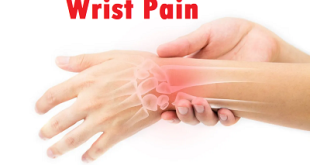
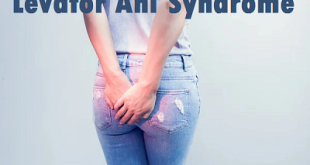
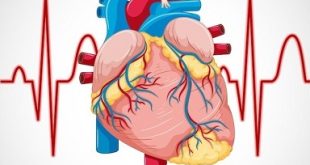

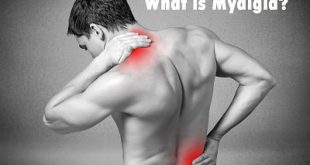
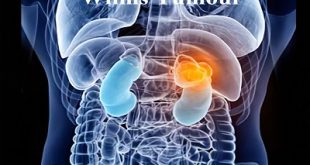

Am having neck pain but don’t know if I can get help because am having too much pain
If you’re experiencing severe neck pain, seek immediate medical attention. Apply cold or warm compresses, practice gentle neck stretches, and consider over-the-counter pain relievers for immediate relief. Ensure a proper ergonomic setup and posture. Consult with a healthcare professional for a thorough examination, especially if the pain persists or is accompanied by other concerning symptoms. If emergency symptoms arise, such as weakness or difficulty breathing, seek emergency medical attention promptly.